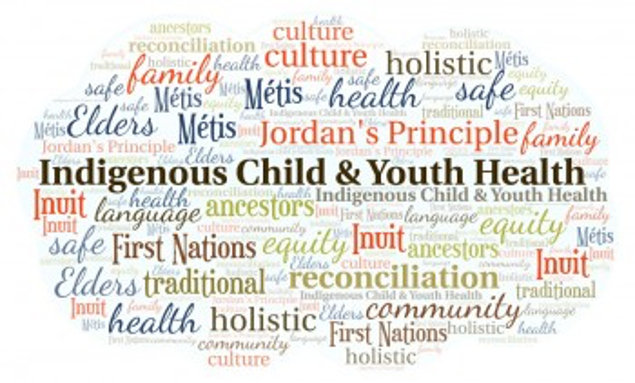Helping Teachers And Families Of Children With ADD/ADHD – October Special Message
Posted on October 1, 2022

October is a special month in schools. It is the month that national treaties are observed, celebrated and thanks is given. Many children and communities participate in fun Hallowe’en activities. The crispness of autumn is enjoyed by many. October is also the month when World Mental Health Day is observed. Mental health means many things in the educational setting for both staff and students. One of the prevalent mental health issues amongst students in classrooms is the diagnosis and/or behaviors associated with Attention Deficit Disorder and Attention Deficit Hyperactivity Disorder. The challenges of this disorder not only affect the student, but also impact the teachers’ classroom management and education administrators’ time with students being sent to the office for disrupting the learning environment. In lieu of this, First Nations Education Administrators may ask themselves: “How can we best support our teachers, students, and families of children with ADD/ADHD and enrich them with the best learning experience?”
According to the Journal of Attention Disorders (2006), the number of Canadian Aboriginal children found to have symptoms associated with ADD/ADHD is significantly higher than expected based on prevalence rates in the general population. This creates greater challenges within our First Nation classrooms. One of the first steps in mitigating disruption in the learning environment is being able to identify the characteristics of ADD/ADHD within a student and make the appropriate referrals for intervention.
Logsdon (2022) explains ADD may be present if a student is displaying six of the following nine characteristics:
- Difficulty sustaining attention
- Often seeming to not be listening
- Failing to pay attention to details
- Difficulty organizing tasks and activities
- Frequently losing things
- Getting easily distracted
- forgetfulness
- Avoiding tasks that require sustained mental effort
- Trouble following instructions
In addition to having at least six of these characteristics, ADHD may be present if a student also displays six of the following nine characteristics:
- Fidgeting hands and feet or squirting while seated
- Running or climbing inappropriately or feelings of restlessness
- Difficulty engaging in activities quietly
- Seeming to always be on the go
- Excessive talking
- Blurting out responses
- Problems taking turns
- An inability to stay seated
- Frequently interrupting others
It is important for First Nations Education Administrators to remind their staff that observing these behaviors does not warrant diagnosis, and that diagnosis of ADD/ADHD must be obtained by a team of professionals, including teachers, doctors, and other specialists working with the student. Therefore, if ADD or ADHD is suspected education administrators must ensure their staff are making the relevant referrals.
Whether students present with ADD or ADHD or not, some practical classroom strategies can be employed to help managing classroom misbehaviors and enriching the learning environment. Some practical classroom strategies that can benefit all students learning within the classroom include:
- Incorporating regular physical exercise throughout the day
- Teach mindfulness and yoga
- Encourages healthy diet, especially during class celebrations
- Provide visual supports to lessons
- Assign work at the level of the student
- Post classroom rules
- Be consistent with rules and consequences
- Provide many opportunities for land-based and hands-on learning
- Allow students to play at recess, it is best not to use recess for more class instruction or consequence
- Allow more movement within the classroom, such as: allowing students to stand to do classwork (so long as they are at desk); allowing students to doodle while listening; having exercise balls as an option or occasional seating; providing under desk cycling; etc.…
- Limit distractions and extra noise
- Use positive language and positive feedback
One First Nation Education Administrator found significant concentration improvement throughout the Wejgwapniaq Elementary School in Gesgapegiaq, Quebec: Former school principal, Sheila Gedeon, equipped each classroom with stationary foot cycling exercise equipment. These light-weight exercise cycle apparatuses were placed under every desk in the classroom and placed on top of the desk at the end of the day for ease of floor cleaning: this process remained mandatory. The use of the foot cycling equipment by each student remained optional, thus avoiding any possible stigma associated with those who have or use the cycle equipment. Results of having this option revealed all students used them, some more than others, less student traffic in the classroom, and increased ability to attend to seatwork by most students.
References:
Baydala, L. (June 2006). Journal of Attention Disorders 9(4):642-7. PubMed. https://pubmed.ncbi.nlm.nih.gov
Logsdon, A. (July 18, 2022). ADD and ADHD: Differences, Diagnosis, & Treatments. Verywellmind, Mental health AZ. https://verywellmind.com/add-and-attention-deficit-disorders-216810
Additude Inside the ADHD Mind. (September 7, 2022). “Teaching Strategies for Students with ADHD: Ideas to help Every Child Shine. https:// https://www.additudemag.com/teaching-strategies-for-students-with-adhd/
Graphic Source: Canadian Pediatric Society